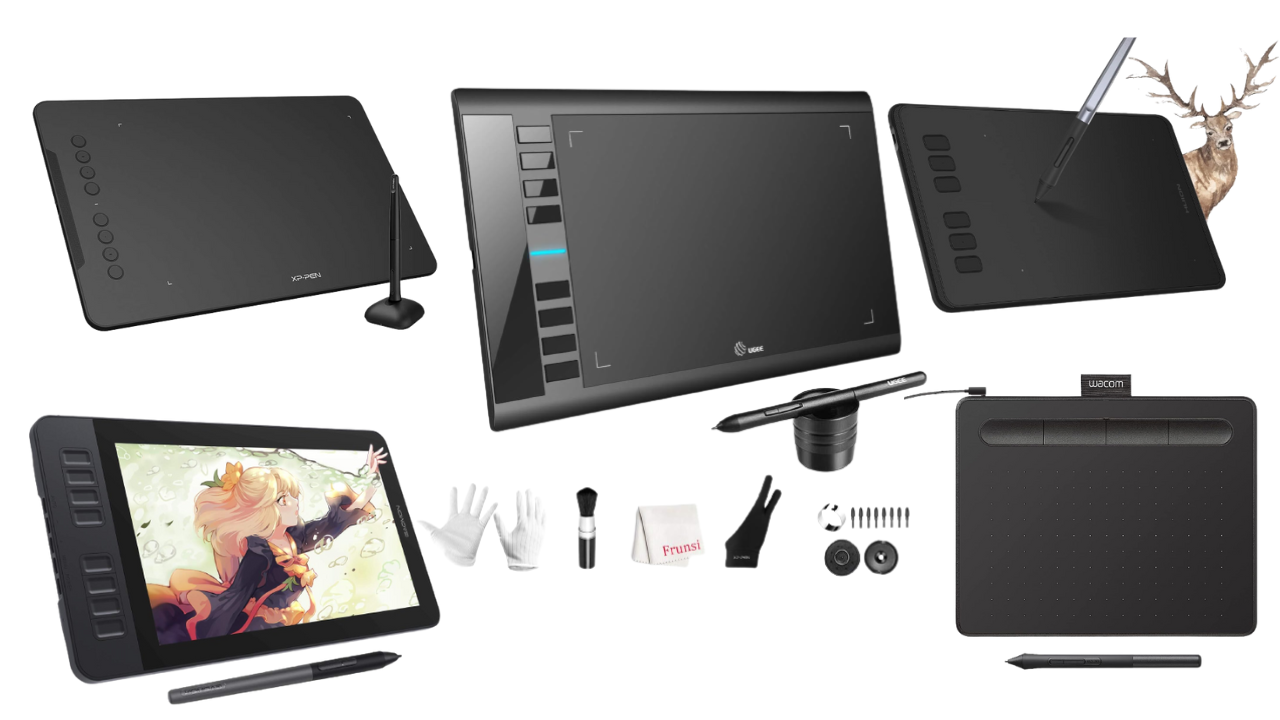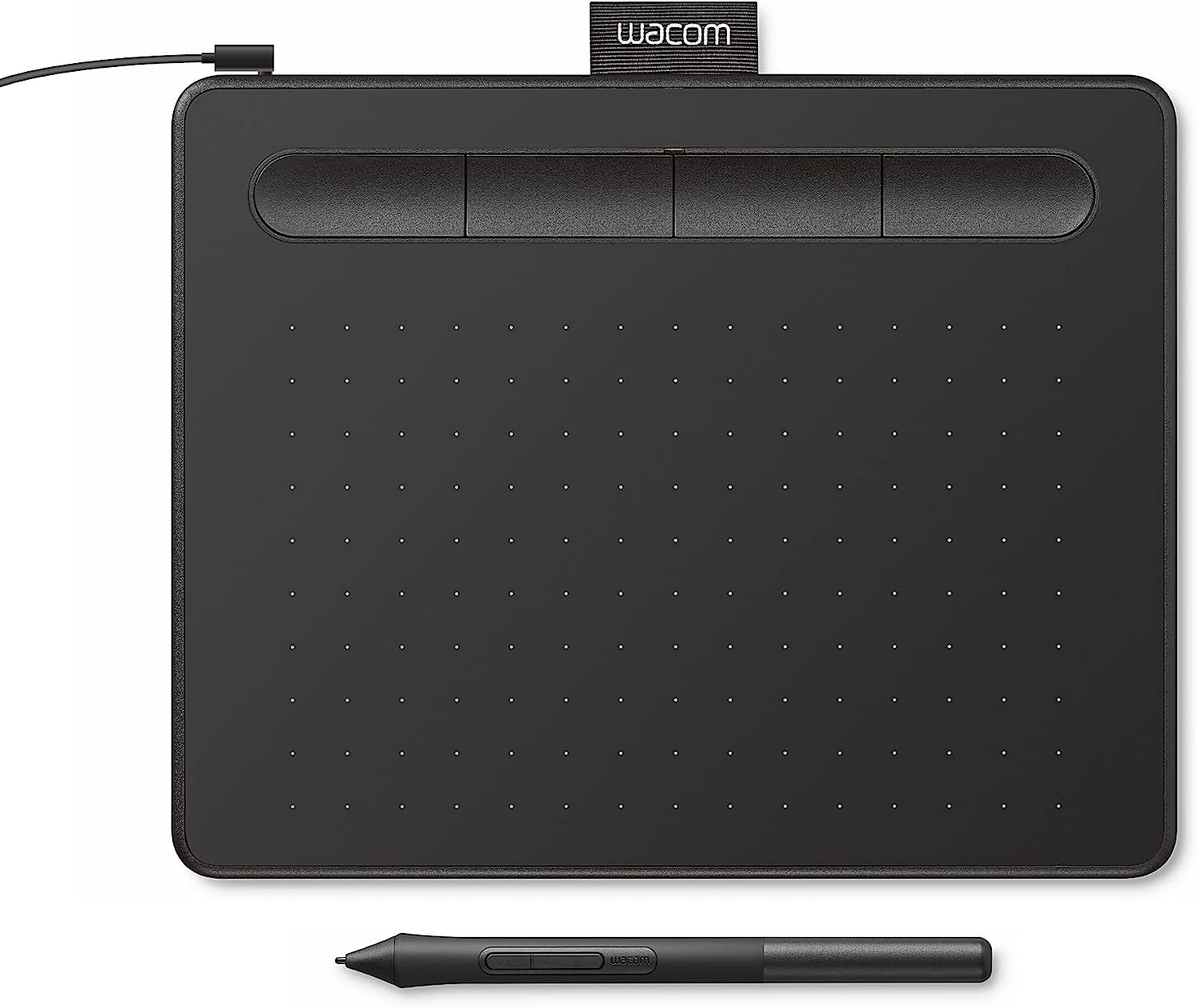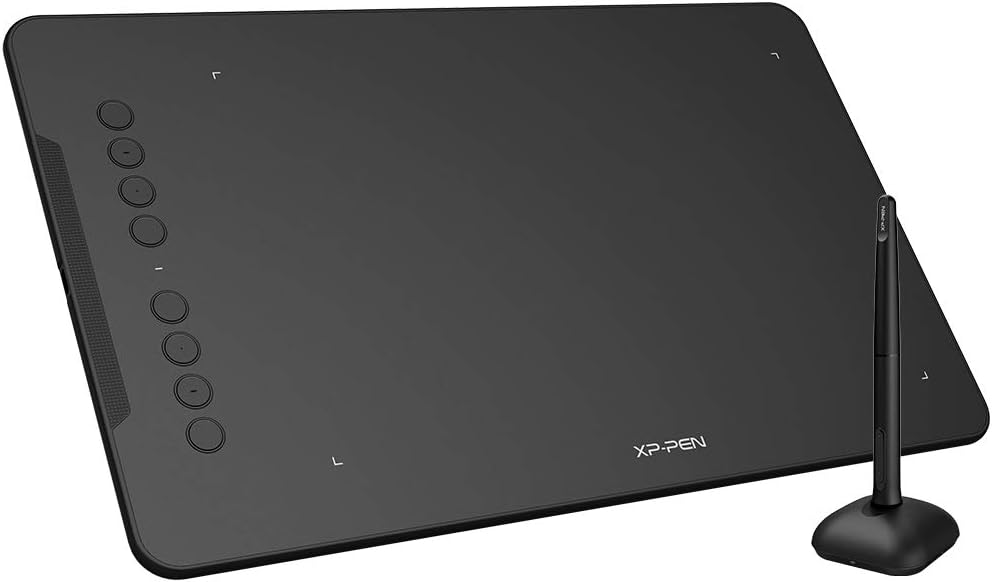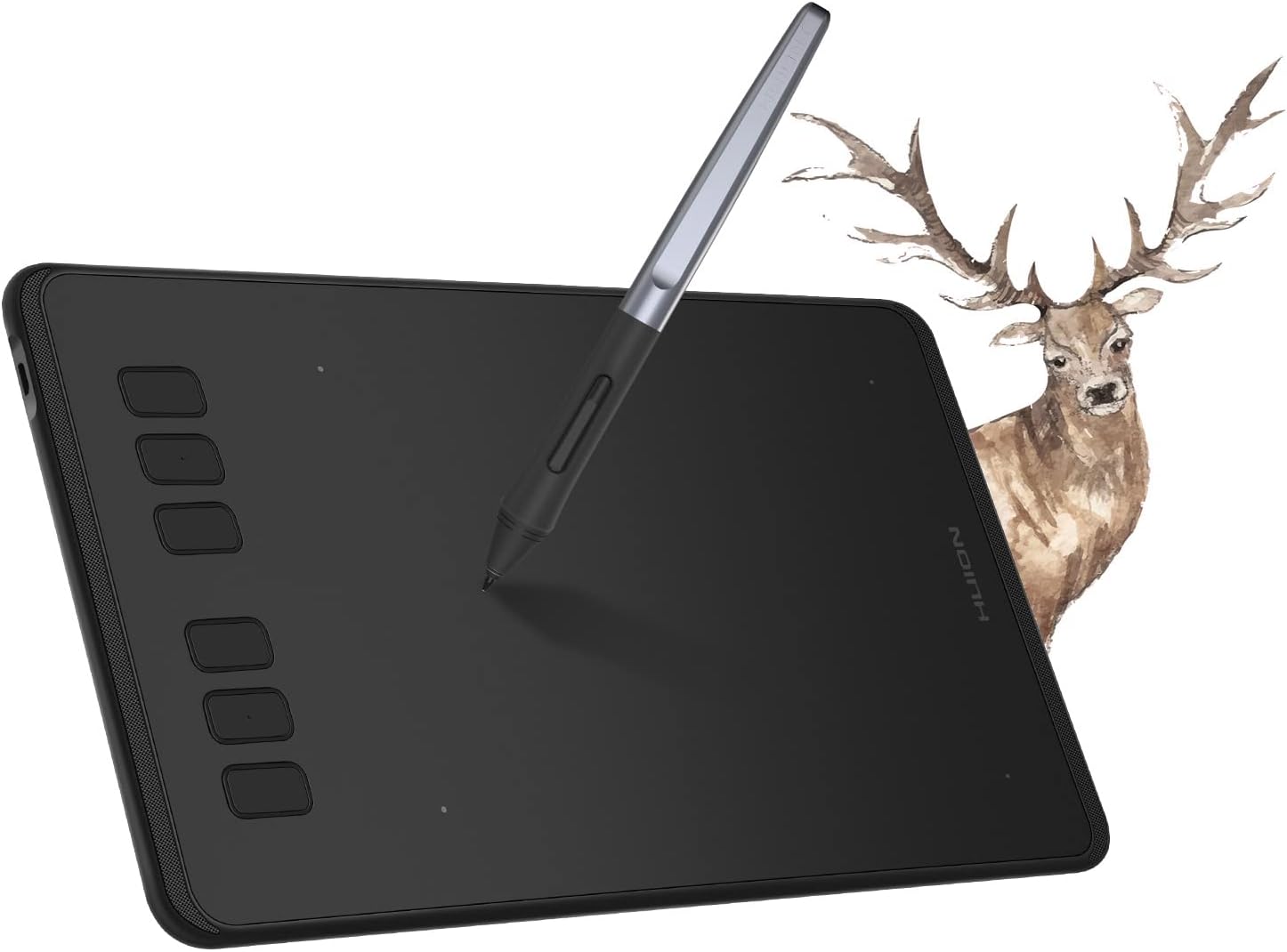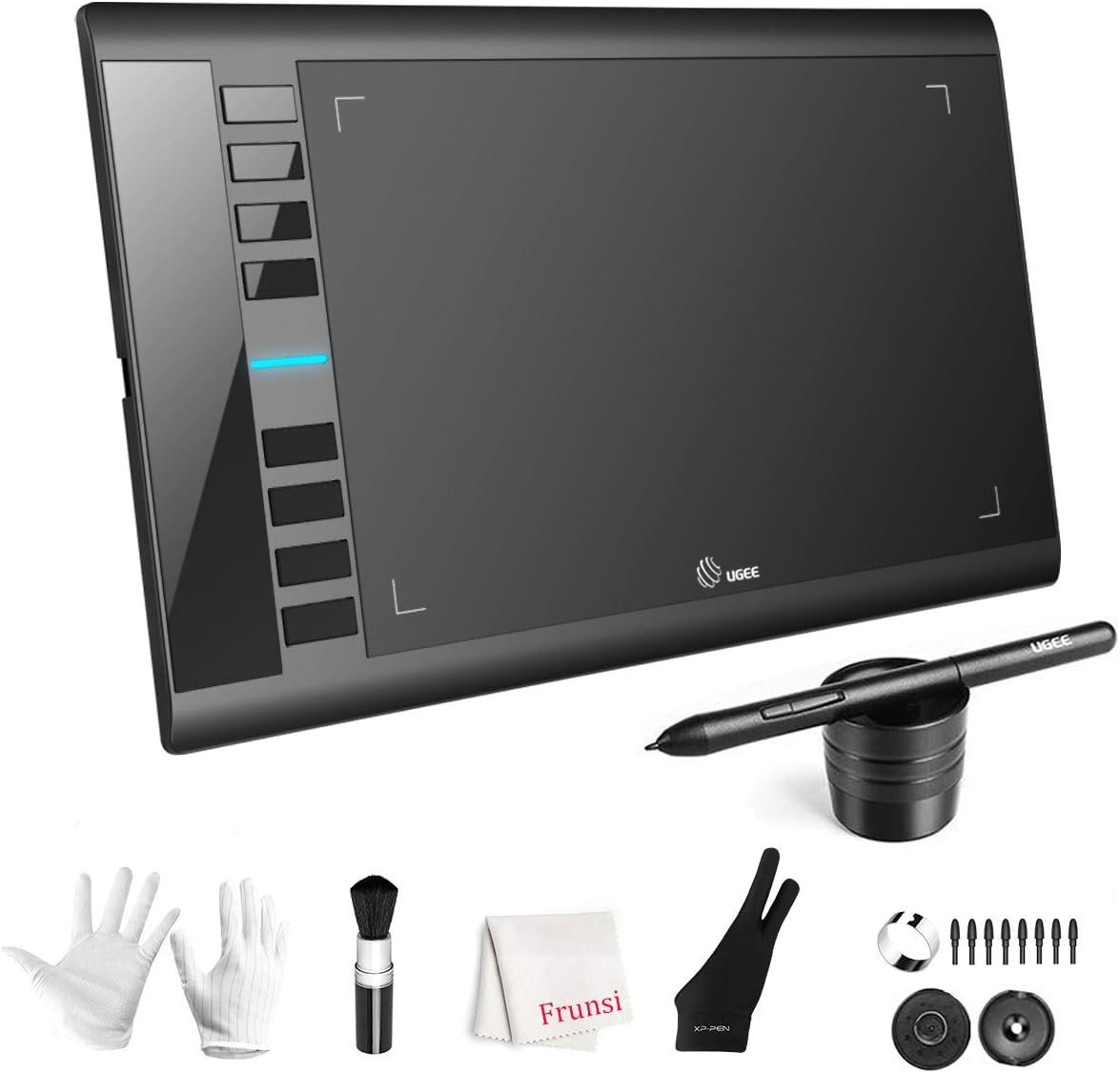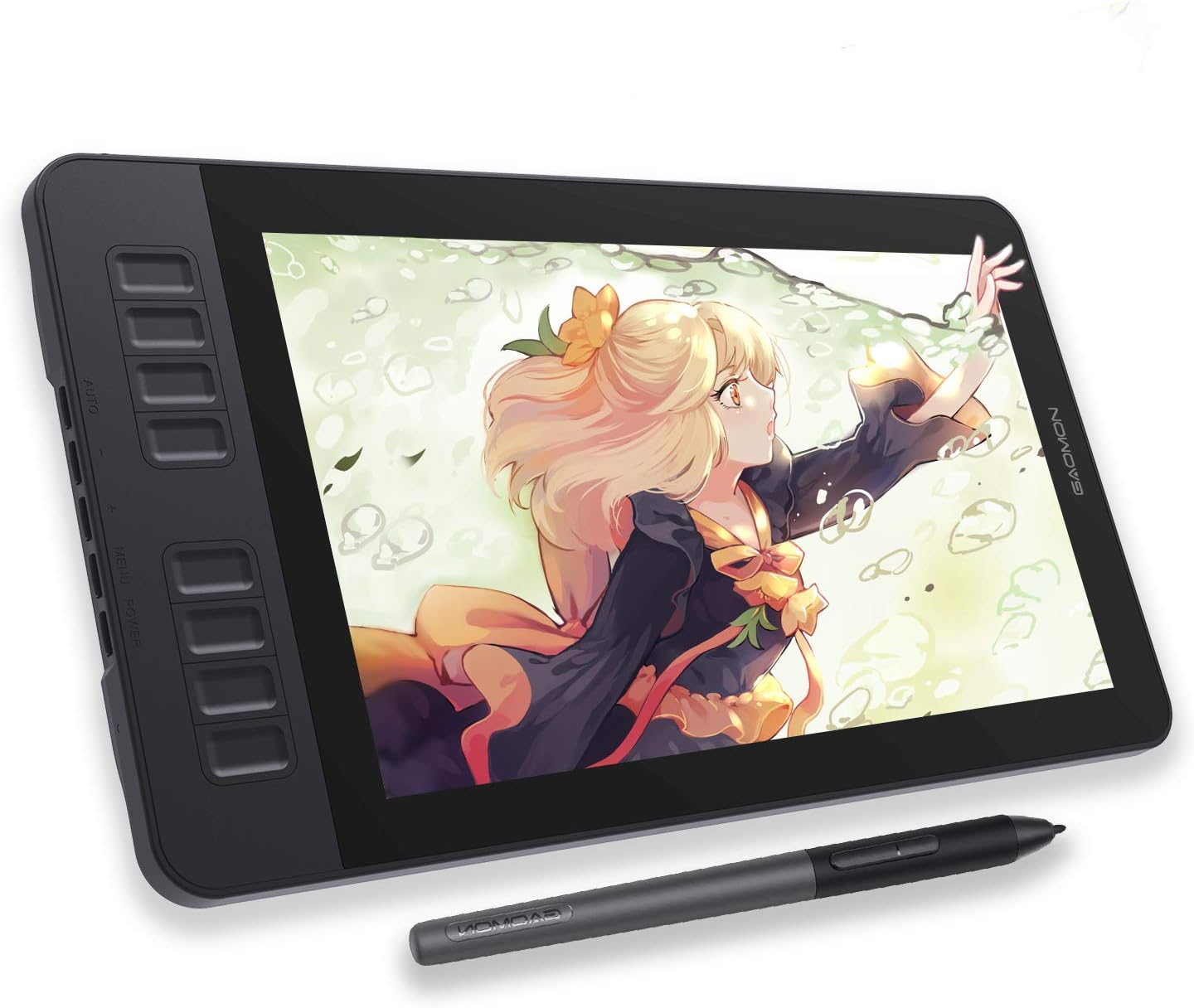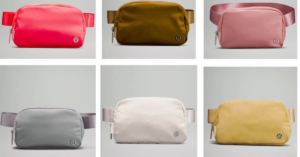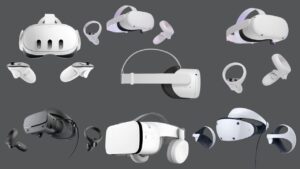The best drawing tablets seamlessly blend technology and artistry, providing a canvas for digital creativity that mirrors traditional techniques. The digital drawing tablets offer high precision, responsiveness, and a natural feel, making them indispensable tools for artists, designers, and illustrators. Key factors defining the best drawing tablets include pressure sensitivity, tilt recognition, and resolution, ensuring accurate and nuanced input.
Top contenders often feature customizable express keys and touch controls, streamlining workflows and enhancing user efficiency. Display quality is paramount, with vibrant colors, wide viewing angles, and minimal latency contributing to an immersive drawing experience. Connectivity options, such as USB-C or Bluetooth, enhance versatility, while compatibility with popular design software adds value to these devices.
Market leaders like Wacom drawing tablet, Huion, and XP-Pen have consistently produced top-tier drawing tablets, offering a range of models catering to different skill levels and preferences. Factors like size, weight, and battery life contribute to the overall usability, and some tablets include additional features like built-in pen storage and adjustable stands.
The best drawing tablets seamlessly merge cutting-edge technology with artistic expression, providing a versatile and intuitive platform for digital creation. Whether for professional artists or hobbyists, these tablets empower users to bring their imaginative visions to life with precision and flair.
Table of Contents
Drawing Tablet
A drawing tablet is a revolutionary tool that bridges the gap between traditional art and digital creation. Designed for artists, illustrators, and graphic designers, these tablets serve as digital canvases where users can draw, sketch, and paint with precision. The key component is an interactive surface that responds to a stylus or pen, allowing for a natural and intuitive drawing experience.
Central to the appeal of drawing tablets is their pressure sensitivity, capturing the subtle nuances of an artist’s touch and enabling varying line thickness and shading. Many models also incorporate tilt recognition, mirroring the way traditional drawing tools respond to changes in angle. The result is a dynamic and expressive medium that adapts to the artist’s technique.
Leading brands such as Wacom drawing tablet, Huion, and XP-Pen offer a diverse range of drawing tablets, catering to different skill levels and preferences. These tablets often come with customizable buttons, touch controls, and advanced features like screen displays for direct interaction. Connectivity options, ergonomic design, and compatibility with popular design software contribute to the tablets’ versatility and appeal.
The digital drawing tablets revolutionize the creative process, providing a digital platform that combines the tactile joy of traditional art with the technological advantages of the digital realm. As essential tools for modern visual artists, these tablets open new avenues for imaginative expression and design.
Our Picks: Best Drawing Tablet
1
Wacom Intuos Drawing Tablet
The Wacom Intuos Small Graphics Drawing Tablet is a versatile and compact digital canvas designed for artists, designers, and students. Equipped with four customizable ExpressKeys, this tablet enhances workflow efficiency by providing quick access to frequently used functions. Its compatibility with Chromebook, Mac, Android, and Windows platforms ensures broad accessibility for users across various devices.
Ideal for drawing, painting, photo/video editing, and design, the Intuos Small offers precise input with battery-free technology, allowing users to focus on their creative process without interruptions. The tablet’s compact size makes it portable and convenient for on-the-go use or limited workspace setups.
The package includes valuable software and training resources, providing users with the tools to enhance their skills. This makes it an excellent choice for both beginners and experienced digital artists looking to elevate their creative capabilities. Additionally, the tablet supports document markup, making it a valuable tool for educational and professional applications.
The Wacom Intuos Small Graphics Drawing Tablet combines customizable features, cross-platform compatibility, and a comprehensive software bundle to offer a user-friendly and powerful tool for digital artists and creators across various disciplines.
2
XPPen Deco 01 V2 Drawing Tablet
The XP-Pen Deco 01 V2 Graphics Tablet is a feature-rich and user-friendly device tailored for digital artists, illustrators, and professionals. With a spacious 10×6.25-inch drawing area, this tablet provides ample space for creative expression. The 8192 levels of pressure sensitivity and battery-free pen ensure precise and responsive input, offering artists a wide range of line thickness and shading options.
One of its standout features is the inclusion of eight customizable shortcut keys, enabling users to streamline their workflow and access frequently used functions with ease. The tablet supports up to 60 degrees of tilt brush effect, allowing for more natural and expressive drawing and painting experiences.
Compatibility is a strong suit of the Deco 01 V2, supporting Windows, Android/Chromebook, and Mac operating systems. It proves to be a valuable tool for online teaching and remote work, catering to a versatile range of applications. The tablet is compatible with popular design software such as Photoshop, SAI, Painter, Illustrator, and Clip Studio, making it a seamless addition to many digital artists’ toolsets.
The tablet comes with free software, enhancing its value proposition for users looking to explore various creative possibilities. In summary, the XP-Pen Deco 01 V2 Graphics Tablet combines advanced features, compatibility, and bundled software to deliver a comprehensive and efficient drawing tool for digital artists across different skill levels and applications.
3
HUION Inspiroy H640P Graphics Tablet
The HUION Inspiroy H640P Graphics Tablet stands out as a versatile and compact digital canvas, ideal for digital artists, designers, and educators. With a 6×4-inch working area, it provides a comfortable space for drawing, sketching, and image editing. The battery-free stylus with 8192 levels of pressure sensitivity ensures precise and natural input, allowing for detailed and expressive creations.
Featuring six easy-access press keys, this tablet enhances workflow efficiency by providing shortcuts to commonly used functions, making it a practical tool for digital art, design, and animation. The tablet’s compatibility with Linux, Mac OS, Windows, and Android devices broadens its accessibility, offering users flexibility in their choice of operating systems.
The H640P is not only a valuable tool for artists but also serves as an excellent device for e-learning and remote teaching. It provides an alternative to the traditional mouse, making it easier for students and teachers to draw, sketch, edit images, take notes, or sign documents digitally. Its ergonomic design and intuitive controls make it suitable for a variety of applications, fostering a seamless transition to digital workflows.
The HUION Inspiroy H640P Graphics Tablet combines functionality, portability, and cross-platform compatibility, making it an excellent choice for digital artists, educators, and anyone seeking a versatile and efficient alternative to traditional input devices.
4
UGEE M708 Drawing Tablet
The UGEE M708 Graphics Drawing Tablet is a comprehensive tool designed for digital artists and creators. Boasting a generous 10 x 6-inch drawing area, this tablet provides ample space for detailed artwork and design projects. The passive stylus with 8192 levels of pressure sensitivity ensures precise and nuanced input, facilitating a natural and responsive drawing experience.
Featuring eight customizable express keys, the M708 enhances workflow efficiency by offering quick access to frequently used functions like eraser, zoom, scrolling, and undo. This proves valuable for artists working with creative software such as Photoshop, Illustrator, Comic Studio, SAI, 3D MAX, Autodesk MAYA, and more. The tablet’s compatibility with both Windows and MAC operating systems makes it versatile for users across different platforms.
Moreover, the M708 caters to both right and left-handed users with its 180-degree rotation, providing flexibility and comfort in usage. This tablet is an excellent choice for those seeking a customizable and user-friendly interface for their digital art creation.
The UGEE M708 Graphics Drawing Tablet offers a large drawing area, high pressure sensitivity, and compatibility with a range of creative software, making it a practical and versatile tool for artists engaged in painting, design, and art creation across various platforms.
5
GAOMON PD1161 Drawing Tablet with Screen
The GAOMON PD1161 11.6-inch Drawing Tablet with Screen is a powerful and versatile tool tailored for digital artists, photographers, animators, and designers. Boasting 8192 levels of pressure sensitivity and supporting ±60-degree tilt, this tablet provides a highly responsive and natural drawing experience. The inclusion of a battery-free stylus further enhances convenience, ensuring uninterrupted creative sessions.
The tablet features 8 shortcut keys for quick access to commonly used functions, complemented by two programmable hot-keys on the pen body for added customization. With eight replacement nibs stored inside the pen holder, users can easily maintain optimal drawing conditions.
Compatible with both Mac and Windows PC, the PD1161 supports a wide range of art programs, including Gimp, Firealpaca, Krita, Medibang, Zbrush, Blender, Inkscape, Photoshop, Adobe Illustrator, Adobe Premiere, Adobe After Effect, Sai version 2, Clip Studio Paint, Corel Paintshop Pro, Autodesk Mudbox, Lightroom, Sketchbook Pro, and more. This makes it a versatile choice for various creative disciplines, such as drawing, photography, animation, sketching, image editing, 3D sculpture, and architectural design.
The GAOMON PD1161 Drawing Tablet with Screen combines advanced features, broad software compatibility, and ergonomic design, making it a reliable and comprehensive tool for digital artists and creators across diverse creative fields.
The Benefits of Drawing Tablet
Drawing tablets offer numerous benefits for artists, designers, and anyone engaged in digital creative work. Here are some key advantages:
Precision and Control:
Drawing tablets provide a high level of precision, allowing users to create detailed and intricate designs with accuracy. The stylus responds to pressure sensitivity, tilt, and other nuances, providing a natural and intuitive drawing experience.
Pressure Sensitivity:
Most drawing tablets come with pressure-sensitive styluses, enabling users to vary line thickness and shading by adjusting the pressure applied. This feature enhances the expressiveness of digital artwork, closely mimicking traditional art tools like pens and brushes.
Real-time Feedback:
Tablets with screens allow for direct pen-on-screen interaction, providing real-time visual feedback as you draw. This direct hand-eye coordination is more intuitive than using a separate graphic tablet without a display.
Versatility:
Drawing tablets are versatile tools suitable for various creative tasks, including drawing, painting, graphic design, photo editing, 3D modeling, animation, and more. They are compatible with a wide range of software applications, catering to diverse creative needs.
Efficient Workflow:
Many drawing tablets feature customizable shortcut keys, express keys, or touch controls that allow users to access frequently used functions with ease. This streamlines the workflow and increases productivity.
Undo and Redo Functionality:
Digital art allows for easy undo and redo actions, providing artists with the flexibility to experiment without the fear of irreversible mistakes. This is a significant advantage over traditional art mediums.
Portability:
Compact and lightweight drawing tablets are easily portable, making them convenient for on-the-go artists or those with limited workspace. Some models are compatible with a variety of devices, including laptops and even certain smartphones.
Digital Storage and Sharing:
Digital artwork can be easily stored, backed up, and shared electronically. This simplifies collaboration among artists and allows for quick dissemination of work via online platforms or social media.
Environmental Impact:
Drawing digitally reduces the need for physical art supplies, cutting down on paper, canvases, and other traditional materials. This can contribute to a more environmentally friendly approach to art creation.
Learning and Skill Development:
Drawing tablets are excellent tools for beginners learning digital art techniques. They provide a forgiving environment for experimentation, and many come with bundled software or online tutorials to help users develop their skills.
Points to buy a Drawing Tablet
When considering the purchase of a drawing tablet, several key points should be taken into account to ensure that the device meets your specific needs and preferences. The points are as below:
Size and Active Area:
Choose a tablet size that aligns with your workspace and drawing preferences.
Consider the active drawing area, which is the space on the tablet where your stylus will be recognized.
Pressure Sensitivity:
Higher levels of pressure sensitivity provide more control over line thickness and shading.
Look for tablets with at least 2048 or more levels of pressure sensitivity.
Stylus Type:
Consider whether the stylus is battery-free or requires charging. Battery-free styluses are often preferred for their convenience.
Check if the stylus supports tilt functionality for a more natural drawing experience.
Screen vs. Non-Screen:
Tablets with screens offer direct pen-on-screen interaction, providing real-time visual feedback. Non-screen tablets require a separate display.
Consider your preference and budget, as screen tablets are typically more expensive.
Compatibility:
Ensure that the tablet is compatible with your operating system (Windows, Mac, or both) and any specific software you plan to use.
Shortcut Keys:
Tablets with customizable shortcut keys or express keys enhance workflow efficiency. These keys provide quick access to commonly used functions.
Resolution:
Higher tablet resolution ensures greater accuracy. Look for tablets with a high LPI (lines per inch) rating.
Durability and Build Quality:
Consider the build quality and materials used in the tablet. Look for a device that feels sturdy and durable.
Connectivity:
Check the available connectivity options (USB, USB-C, Bluetooth) and ensure compatibility with your devices.
Brand and Reviews:
Research reputable brands known for producing quality drawing tablets.
Read user reviews and testimonials to get insights into the tablet’s performance and reliability.
Budget:
Set a budget based on your requirements. There are drawing tablets available at various price points, catering to different user needs.
Additional Accessories:
Some tablets come with extra accessories like pen holders, replacement nibs, or carrying cases.
Customer Support and Warranty:
Check the manufacturer’s customer support reputation and the warranty offered with the tablet.
By carefully considering these points, you can make an informed decision when purchasing a drawing tablet that aligns with your artistic requirements and preferences.
Care and Maintenance of a Drawing Tablet
Proper care and maintenance of a drawing tablet are essential to ensure its longevity and optimal performance. Here are some tips to help you take care of your drawing tablet:
Clean the Screen or Surface:
Regularly clean the screen or surface of your drawing tablet using a soft, lint-free microfiber cloth. This helps prevent the buildup of dust, dirt, or fingerprints.
Protect the Tablet Surface:
Consider using a screen protector to protect the drawing surface from scratches. This is particularly important for tablets with display screens.
Store the Stylus Properly:
When not in use, store the stylus in its designated holder or case to prevent damage and to ensure that you don’t lose it.
Avoid Liquid Exposure:
Keep liquids away from the tablet to prevent spills that could damage the electronic components. In case of accidental spills, immediately power off the tablet and allow it to dry thoroughly before use.
Use a Tablet Stand:
If you’re using a non-display tablet, consider using a tablet stand to provide a comfortable drawing angle. This can reduce strain on your hands and wrists.
Secure the Cable:
Avoid putting stress on the cable connections. Secure the cable properly, and if possible, use cable organizers to prevent unnecessary wear and tear.
Update Drivers:
Regularly check for and install driver updates provided by the tablet manufacturer.
Avoid Dropping or Impact:
Handle the tablet with care and avoid dropping it. Even minor impacts can damage internal components or affect calibration.
Protect from Extreme Temperatures:
Avoid exposing the tablet to extreme temperatures or humidity, as this can impact its performance.
Power Off When Not in Use:
Power off the tablet when it’s not in use for an extended period. This helps conserve energy and prevents unnecessary wear on internal components.
Regularly Check Express Keys and Buttons:
Ensure that any express keys or buttons on the tablet are clean and functioning properly. If they become sticky or unresponsive, clean them according to the manufacturer’s guidelines.
Backup Settings:
If your tablet allows customization of settings, consider backing up your preferences in case you need to reinstall drivers or if you switch devices.
Read the User Manual:
Familiarize yourself with the user manual that comes with your tablet. It often contains important care and maintenance instructions specific to your device.
By following these care and maintenance tips, you can extend the lifespan of your drawing tablet and ensure a consistent and reliable performance over time.
Conclusion
A drawing tablet is a powerful and versatile tool that has revolutionized the way artists, designers, and creative professionals approach digital art. With its advanced features and capabilities, a drawing tablet offers a seamless bridge between traditional and digital artistic expression.
The precision and control provided by pressure-sensitive styluses allow for detailed and nuanced creations, while customizable shortcut keys enhance workflow efficiency. The advent of tablets with screens provides a direct, real-time interaction that mimics traditional drawing methods, offering artists an intuitive and immersive experience.
The benefits of a drawing tablet extend beyond artistic endeavors, finding applications in photography, animation, sketching, image editing, 3D sculpture, and architectural design. Its compatibility with a wide range of creative software makes it a versatile tool for various disciplines.
Care and maintenance play a crucial role in preserving the tablet’s longevity and performance. Regular cleaning, proper storage of the stylus, and attention to cable connections contribute to the overall durability of the device.
As technology continues to advance, drawing tablets are evolving to meet the ever-growing demands of digital artists. Whether you’re a seasoned professional or a beginner exploring the digital realm, a drawing tablet offers an innovative and efficient canvas for unleashing creative potential, providing a gateway to endless possibilities in the world of digital art.
FAQs
Q: What is a drawing tablet, and how does it differ from a regular tablet or touchscreen device?
A: A drawing tablet, also known as a graphics tablet, is a device that allows users to create digital art by using a stylus or pen on a responsive surface. Unlike regular tablets or touchscreens, drawing tablets are specifically designed for precise input and pressure sensitivity, providing a more accurate and natural drawing experience.
Q: Do I need a drawing tablet with a screen, or is a non-display tablet sufficient?
A: The choice between a tablet with a screen and a non-display tablet depends on personal preference and budget. Tablets with screens offer direct pen-on-screen interaction for a more intuitive experience but are generally more expensive. Non-display tablets require a separate monitor but are more affordable and still provide a highly effective drawing experience.
Q: What features should I consider when choosing a drawing tablet?
A: Consider factors such as size, pressure sensitivity, tilt functionality, customizable shortcut keys, compatibility with your operating system and preferred software, and the type of stylus. Each of these features contributes to the overall usability and performance of the drawing tablet.
Q: Can I use a drawing tablet for tasks other than drawing, such as photo editing or 3D modeling?
A: Yes, drawing tablets are versatile tools that can be used for a variety of creative tasks, including photo editing, 3D modeling, graphic design, and more. Many tablets are compatible with a wide range of software applications, making them suitable for various creative disciplines.
Q: How do I maintain and care for my drawing tablet?
A: Regularly clean the tablet’s surface with a soft, lint-free cloth, store the stylus properly when not in use, and avoid exposure to liquids. Follow the manufacturer’s guidelines for any additional care instructions, and keep the tablet away from extreme temperatures and impacts.
Q: Can I use a drawing tablet with different operating systems?
A: Many drawing tablets are compatible with multiple operating systems, including Windows, Mac, and some even support Android. However, it’s important to check the product specifications to ensure compatibility with your specific operating system.
Q: Are there any free software options that I can use with my drawing tablet?
A: Yes, there are several free software options available, such as GIMP, Krita, Firealpaca, and Inkscape, which work well with drawing tablets. Additionally, some tablets come with bundled software or trial versions of popular creative applications.
Q: Can I use a drawing tablet for online teaching or remote work?
A: Yes, many drawing tablets are suitable for online teaching and remote work. They can be used for virtual whiteboarding, illustrating concepts, or creating digital content during online meetings and presentations.
Q: Are there differences between various brands of drawing tablets, and does brand matter?
A: Different brands offer drawing tablets with varying features, build quality, and performance. It’s important to consider your specific needs, read reviews, and choose a reputable brand known for producing reliable and high-quality tablets.
Q: Can I connect a drawing tablet to a smartphone or other mobile devices?
A: Some drawing tablets are compatible with smartphones or tablets, particularly those running Android. However, it’s essential to check the tablet’s specifications and ensure it supports your specific mobile device.

